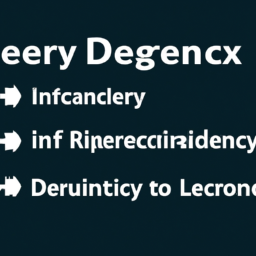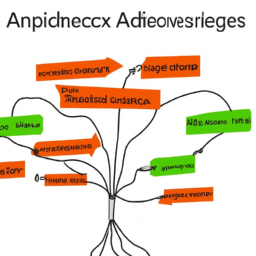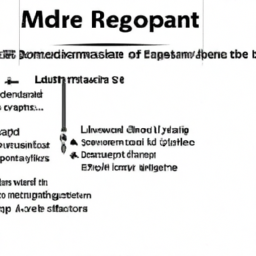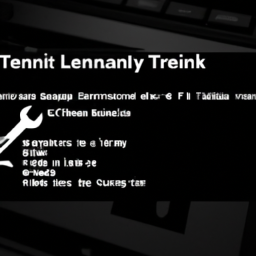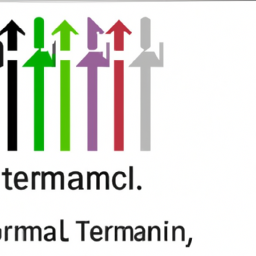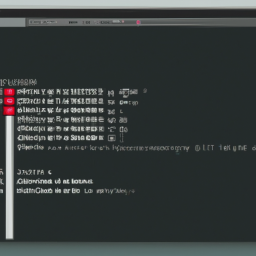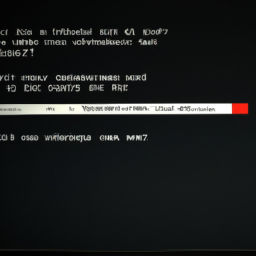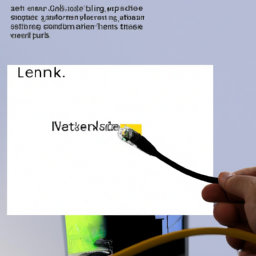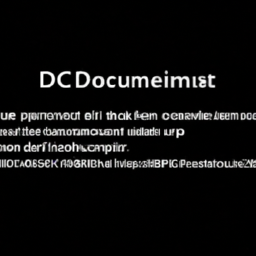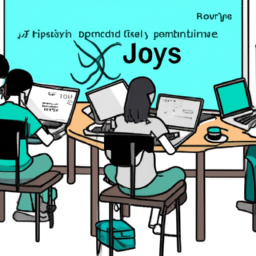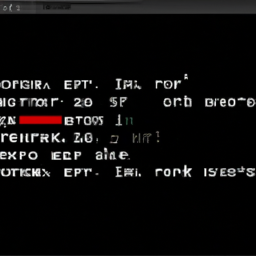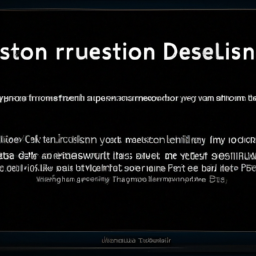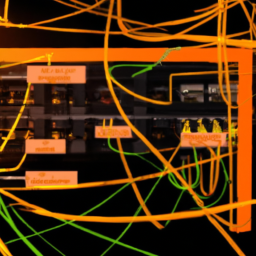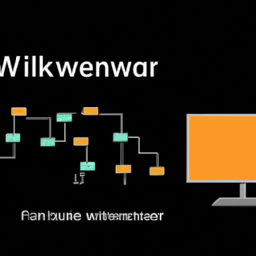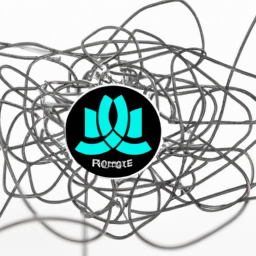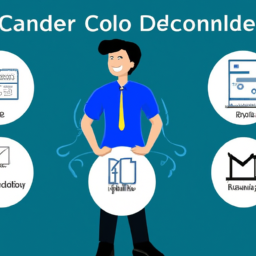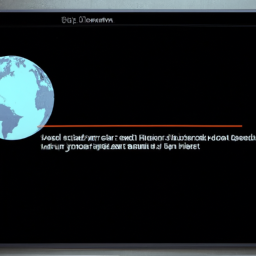Are you tired of feeling like a detective every time you encounter a missing package dependency error in your Linux system? Well, worry no more! In this article, we will guide you through the process of troubleshooting these pesky errors, allowing you to regain control of your Linux experience.
Package dependencies are like puzzle pieces that need to fit perfectly together for your software to function correctly. When one of these pieces is missing, it can cause frustration and confusion. But fear not! We will show you how to identify the missing dependency, install it, and update your system to ensure smooth sailing.
Sometimes, conflicting packages can also be the culprit behind these errors. We will teach you how to remove them and avoid future conflicts. And if all else fails, don’t worry! The Linux community is always there to lend a helping hand.
So, grab your detective hat and let’s dive into the world of troubleshooting missing package dependency errors in Linux!
Key Takeaways
- Missing package dependencies can cause applications to fail or exhibit erratic behavior.
- Error messages and logs are valuable sources of information for identifying missing dependencies.
- Package management tools can help search for and install missing dependencies, as well as resolve conflicts between different versions of packages.
- Updating the system regularly and removing conflicting packages are essential for smooth system operation.
Understand the Basics of Package Dependencies
So, you want to dive into the world of troubleshooting missing package dependency errors in Linux? Well, let’s start by getting a grasp on the basics of package dependencies.
Package dependency resolution is a crucial aspect of Linux systems, as it ensures that all required software components are present for proper functionality. When a package is installed, its dependencies are automatically pulled in, forming a chain of interconnected software. However, if a dependency is missing, it can have a significant impact on system performance.
Applications may fail to run, crash unexpectedly, or exhibit erratic behavior. To identify the missing dependency, you need to thoroughly analyze error messages, check system logs, and utilize package management tools. This will help you pinpoint the specific dependency that needs to be installed or updated.
Identify the Missing Dependency
To identify the missing dependency, you need to check error messages and logs. These error messages can often be found in the terminal or system logs. Additionally, you can use package management tools like apt or yum to search for and find missing dependencies. These tools provide a convenient way to manage packages and their dependencies, allowing you to easily identify and install any missing packages.
Check error messages and logs
However, it’s crucial to carefully examine the error messages and logs when troubleshooting missing package dependency errors in Linux. These error messages and logs provide valuable insights into the root cause of the issue and can help identify the missing dependency.
To analyze error logs, use debugging techniques such as checking system logs, package manager logs, and application-specific logs. Look for any error messages that mention missing dependencies or issues related to package installation. Pay attention to any specific error codes or messages that provide clues about the missing dependency.
By thoroughly analyzing the error messages and logs, you can gain a better understanding of the problem and take appropriate actions to resolve it.
Moving forward to the subsequent section, you can use package management tools to find and install the missing dependencies.
Use package management tools to find missing dependencies
Explore package management tools to easily identify and install any missing dependencies. This is an essential step in troubleshooting missing package dependency errors in Linux. Package management tools provide a convenient way to manage software installations and resolve dependency issues.
Here are three useful features of package management tools:
-
Troubleshooting conflicting package versions: Package management tools can detect when different versions of the same package are installed, causing conflicts. They allow you to resolve these conflicts by either removing conflicting packages or upgrading/downgrading them to compatible versions.
-
Resolving circular dependencies: Sometimes, packages depend on each other in a circular manner, making it difficult to install or update them. Package management tools can analyze these dependencies and suggest solutions to break the circular loop.
Using package management tools simplifies the process of troubleshooting and resolving missing package dependencies. This ensures a smoother software installation experience.
In the next section, we’ll discuss how to install missing dependencies.
Install Missing Dependencies
First, make sure you’ve thoroughly researched the missing package dependency errors on Linux, as there could be various factors contributing to this issue. Troubleshooting common errors and resolving dependency conflicts are essential steps in resolving missing package dependency errors.
Once you’ve identified the missing dependencies, you can proceed to install them. Use the package management tool specific to your Linux distribution, such as apt-get, yum, or dnf, to install the missing dependencies. These tools will automatically handle any dependencies required by the packages you’re installing, ensuring a smooth installation process.
After successfully installing the missing dependencies, you can then proceed to update your system to ensure all packages are up to date. This will help prevent future dependency issues.
Update Your System
To keep your system running smoothly and avoid future hitches, it’s crucial to regularly update it, as the saying goes, "A stitch in time saves nine." Updating your system not only ensures that you have the latest features and bug fixes, but also helps prevent missing package dependencies. Common reasons for missing package dependencies include outdated software versions and incompatible libraries. By regularly updating your system, you can stay ahead of these issues and ensure that all required dependencies are installed correctly. To make the updating process easier, you can use package managers like apt or yum, which automatically handle dependencies. By following this practice, you can prevent missing package dependencies in the future. Now, let’s move on to the next section about removing conflicting packages.
Remove Conflicting Packages
Let’s dive into how we can get rid of conflicting packages to ensure a smooth operation of your system. Here are three steps you can take to resolve package conflicts and find alternative packages:
-
Identify Conflicting Packages: Begin by identifying the packages that are causing conflicts. Check the error messages or logs for any specific package names mentioned. This will help you understand which packages are causing the issue.
-
Remove Conflicting Packages: Once you’ve identified the conflicting packages, remove them from your system. Use the package manager to uninstall these packages completely. This will ensure that there are no residual files or dependencies left behind.
-
Find Alternative Packages: After removing the conflicting packages, search for alternative packages that provide similar functionality. Look for packages with similar names or functionalities that can replace the ones you removed. Install these alternative packages to ensure your system continues to operate smoothly.
Now that you’ve resolved the package conflicts and found alternative packages, let’s move on to seeking help from the Linux community to further troubleshoot any remaining issues.
Seek Help from the Linux Community
If you’re in need of assistance with any remaining issues, the Linux community is always there to lend a helping hand.
When troubleshooting missing package dependencies, there are alternative methods you can try to seek help from the Linux community. One option is to visit online forums and communities dedicated to Linux users. These platforms provide a space for users to ask questions and share their experiences.
Another approach is to join mailing lists or chat channels where experienced Linux users and developers can offer guidance. However, it’s important to be aware of common pitfalls when seeking help from the Linux community. Some users may not respond or provide inaccurate information, so it’s crucial to verify any advice received.
Additionally, it’s recommended to provide detailed information about the issue, including the specific error message and steps already taken to troubleshoot.
By utilizing the resources available in the Linux community and being cautious of potential pitfalls, you can effectively troubleshoot missing package dependency errors.
Frequently Asked Questions
How do I identify which package is causing the missing dependency error?
To identify which package is causing the missing dependency error in Linux, you can use command line tools like ‘apt’ or ‘dpkg’. By running the command ‘apt-cache showpkg
To automatically resolve missing package dependencies, you can use the ‘apt-get’ command with the ‘–fix-missing’ flag. This will automatically download and install any missing packages, resolving the dependency issue.
What should I do if I am unable to find the missing dependency in the package manager?
If you can’t find the missing dependency in the package manager, there are alternative methods for resolving the issue. You can try searching for the dependency on external websites or forums that specialize in Linux troubleshooting.
Additionally, you can manually download and install the missing dependency from a trusted source. To prevent missing dependency errors in the future, regularly update your system and be cautious when installing third-party packages that may introduce conflicting dependencies.
Is it possible to manually install a missing dependency without using the package manager?
Yes, it is possible to manually compile and install a missing dependency without using the package manager. You can download the source code for the missing dependency, compile it, and then install it manually.
However, there are potential risks involved in this process. Manually installing a dependency may result in compatibility issues with other software and can make it difficult to manage and update the system. Additionally, it may not be supported or maintained by the package manager, leading to potential security vulnerabilities.
Can I update my system without installing the missing dependency first?
Updating your Linux system without installing a missing dependency may have both pros and cons. On the positive side, you can benefit from new features, bug fixes, and security patches introduced in the update.
However, there are potential risks and consequences to consider. Without resolving missing dependency errors, the updated system may encounter compatibility issues, software crashes, or even fail to boot. It’s crucial to resolve these errors before updating to ensure a stable and functional system.
How do I determine if a package is conflicting with the missing dependency?
To check for conflicting packages on your Linux system, you can use the package manager’s dependency resolution feature. By running a command such as ‘apt-get install
However, it’s not recommended to force the installation of a package without resolving the missing dependency first, as this can lead to unstable system behavior and potential conflicts in the future.
Conclusion
In conclusion, troubleshooting missing package dependency errors in Linux can be frustrating, but it can be resolved with the right knowledge and guidance. Just like navigating through a dense forest, you need to understand the basics, identify the missing pieces, and install them carefully.
Updating your system is like clearing the path ahead, while removing conflicting packages is like removing obstacles. And when all else fails, don’t hesitate to seek help from the Linux community, like finding a guiding light in the darkness.
Remember, perseverance and assistance will lead you to a solution.








